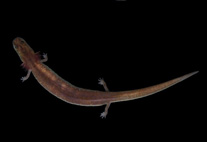Abstract
The Bajo Barreal Formation (Cenomanian, Late Cretaceous; central Patagonia, Argentina) preserves an important and rich fossil record. Among the dinosaurs described, a small ornithischian, Notohypsilophon comodorensis, was named in the 1990s. This small-bodied dinosaur, the most complete representative of the group discovered in that formation, was described as a “hypsilophodontid” ornithopod based on close morphological affinities with other members of that group, which is currently regarded as paraphyletic. Within this context, we present a restudy of Notohypsilophodon. This dinosaur is considered a basal ornithopod, probably more basal than Gasparinisaura. Likewise, this analysis emends and provides additional unique anatomical characters that support its taxonomic validity and position. On the basis of weak evidence, Notohypsilophodon might share the presence of gastroliths with other basal ornithopods (Gasparinisaura and Haya), which could suggest a specific behavior in response to its food ingestion. Finally, this study increases our knowledge of the evolutionary dynamics of South American Cretaceous ornithopods, and therefore broadens our knowledge of the early Late Cretaceous continental vertebrate assemblages of central Patagonia and of the Southern Hemisphere in general.

